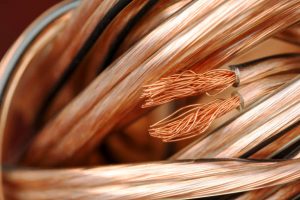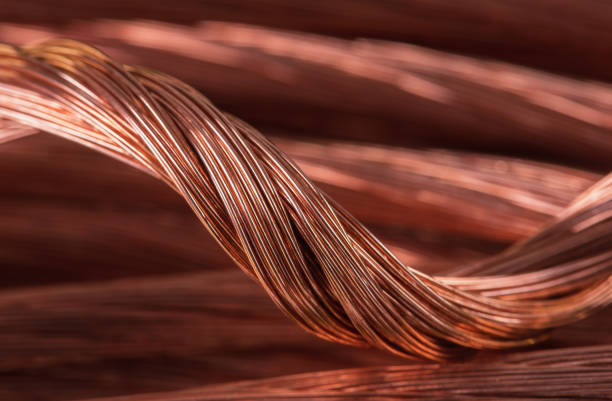Resistance of copper wire plays a central role in electric engineering applications because it directly impacts electrical efficiency and maintenance stability. The primary features of copper have caused this material to dominate various uses including home wiring systems and industrial control mechanisms. The unique capabilities of copper realize its significance in electrical science and its relations with resistance mechanisms. Let’s explore.
Table of Contents
ToggleWhat Is Electrical Resistance?
Resistance describes the strength at which a substance blocks electric current flow. Resistance operates as an electronic traffic congestion which makes electricity flow difficult when resistance levels increase. The electrical current’s smooth transmission through materials depends on their low resistance property where copper stands out as the most effective material.
Why Copper Is the Top Choice
Copper emerges as an outstanding material because it demonstrates both low resistance and excellent conductivity properties. This material provides ideal combinations of strength alongside long-set life duration and economical adaptability. The structure of atomic elements in copper permits seamless electron movement to enable power flow with minimal strength losses.
Due to its lower cost and availability, copper represents the selected material even though silver conducts slightly better, making it a preferred choice when considering the resistance of copper wire.
Factors That Influence Resistance in Copper Wires
Several factors can affect the resistance of a copper wire:
Length of the Wire: The longer the wire, the higher its resistance. It’s similar to water flowing through a pipe—the longer the pipe, the more resistance the water encounters.
Thickness of the Wire: A thicker wire has a lower resistance because it provides more space for electrons to flow. Think of it as a multi-lane highway versus a single-lane road. This concept is key when considering the resistance of copper wire.
Temperature: Copper’s resistance increases slightly as the temperature rises. Heat causes atoms to vibrate more, obstructing the free flow of electrons.
Purity of Copper: High-purity copper wires have lower resistance. Impurities can disrupt the uniform flow of electrons, increasing resistance.
Applications of Copper Wire
- Copper wires power homes safely and efficiently.
- Copper ensures smooth electrical flow in electronics like smartphones and laptops.
- Electric vehicles and modern cars depend on copper for wiring and components.
- Copper plays a key role in renewable energy systems like solar panels and wind turbines.
Copper vs. Aluminum: Which Is Better?
| Property | Copper vs. Aluminum |
| Conductivity | Copper has higher electrical conductivity than Aluminum. |
| Weight | Aluminum is lighter than Copper, making it ideal for certain applications. |
| Cost | Aluminum is generally less expensive than Copper. |
| Corrosion Resistance | Copper has better corrosion resistance than Aluminum in most environments. |
How Resistance Impacts Performance
Extensive energy waste occurs when electricity encounters high resistance in wires because it converts to heat. The resistance of a wire affects both efficiency levels and exposes systems to problematic overheat conditions which can result in fires. Through its low resistance property copper provides safer electrical wiring that also functions more efficiently.
Recycling Copper: A Smart Choice

The world has established copper as one of its most commonly recycled materials. Recycling old copper wires delivers environmental advantages along with cash payment opportunities. Several Perth-based facilities allow residents to exchange unwanted copper for money through their scrap metal service operations. Recycling copper both decreases our dependency on mining and helps preserve valuable natural resources beside lowering our energy usage.
Environmental Benefits of Recycling Copper
Common Misconceptions About Copper Wires
- Copper wires are durable but can degrade over time in harsh conditions.
- The thickness of a wire should match its intended use; overly thick wires can be inefficient.
- Aluminum has higher resistance and lower durability, making it less reliable than copper.
How to Choose High-Quality Copper Wires
Users should buy copper wires which have minimum contamination factors and adequate insulation while following industry requirements. Wires certified by quality manufacturers deliver both peak performance alongside safety guarantees.
The Future of Copper
The substantial reliability and various applications of copper ensure its persistence as a dominant technology element in upcoming innovations. The combinaiton of low resistance and high conductivity types copper as an important component which will enable future technological progress.
Conclusion
Copper stands as an essential material for powering homes, in addition to electric vehicles, while enabling recycling cash operations across Perth. Future sustainability demands continue to strengthen copper’s status as a fundamental resource that will extend its importance in the coming years, including understanding the resistance of copper wire as a key factor in its applications.
FAQs
Why is copper preferred for electrical wiring?
Copper’s low resistance and high conductivity make it efficient and reliable for electrical applications.
Can copper wires be recycled?
Yes, copper is highly recyclable and retains its value, making it an eco-friendly option.
How does temperature affect copper wires?
Higher temperatures slightly increase resistance due to atomic vibrations.
Is aluminum a good alternative to copper?
Aluminum is cheaper but less efficient and durable, making copper the better choice for most applications.
Where can I recycle copper wires?
Local scrap metal services, such as those in Perth, offer cash for recycled copper.

